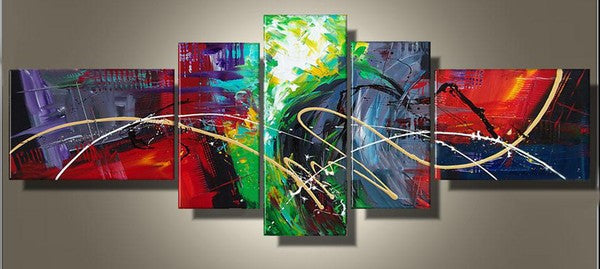
Every artist will have their own preferred brand of oil paints, based on things such as the colors available, the consistency of the paint, and price. I believe in rather buying a few tubes of artist's colors than a whole range of cheap paints as the colors are more saturated, for starters, and you'll get better results when mixing colors. There is little to differentiate the best artist's oil paints other than price and availability, so I'd recommend assessing a tube of a similar color in various brands to see how you feel about each.
01 of 10
M GRAHAM OIL PAINTS
Another small paint manufacturer in the USA created by an artist to produce high quality, traditional-style oil paints. Walnut oil is used as a binder instead of linseed oil; it's a slow-drying oil with less tendency to yellow. It also has a lower viscosity (is more free spreading) so works well for glazing and thinner applications of paint without adding turps.
02 of 10
GAMBLIN OIL PAINTS
Gamblin Artists' Colors is an USA paint company founded by colorman Robert Gamblin that aims to produce quality paints that are safe to use. Its turps replacement or solvent, Gamsol, has a lower evaporation rate and higher flashpoint than turps, making it safer to use in the studio. A wide range of colors is available, including various grays, a flake white replacement with working properties like lead white, and a chromatic black. Gamblin also produces an alkyd-based medium, Galkyd, which speeds up the drying time of oils.
03 of 10
WINSOR AND NEWTON OIL PAINTS
W&N is one of the most widely available brands and its oil paints, like its other paints, strikes a good balance between price (not quite faint-on-the-spot range) and quality. If you're on a tight budget, save money by selecting select your colors from the series 1 pigments in the range, otherwise pick 'n mix from the wide range of pigments including lead white for traditionalists (labeled Cremnitz White). (Note: W&N's student oil paint is branded Winton.)
04 of 10
SENNELIER OIL PAINTS
Sennelier's oil paints have a stiff-butter consistency, spreading and blending easily with a brush but liking to hold its shape and brushmarks. The company's history of making oil paints dates back to 1887, when Gustave Sennelier set himself up as a color merchant in Paris. Artists that used Sennelier oils include Monet, Gauguin, Matisse, and Picasso. Today Sennelier has more than 140 colors in its range of artist's oil paints.
05 of 10
SCHMINCKE MUSSINI OIL PAINTS
Made in Germany, Mussini is Schmincke's artist's quality grade oil paint. Pigment is mixed with linseed oil and dammar resin (and sometimes other oils) to give a paint the manufacturer says dries more evenly from inside and reduces the risk of the paint wrinkling as it dries. About 100 colors available, including a range of grays.
06 of 10
MICHAEL HARDING OIL PAINTS
Oil paints created by an artist in London and definitely not cheap. You're paying for the intensity of the colors through the high pigment loading and lack of fillers. If glazing is your preferred oil painting technique, a tube should last a while. Good range of colors, including traditional favorites such as lead white. At least once, treat yourself to a tube in a favorite color, compare it to what you usually use, and see if you think it's truly better or just celebrity paint-manufacturer hype.

07 of 10
BOB ROSS OIL PAINTS
There are three categories of painters: those who's never heard of Bob Ross and his TV program "The Joy of Painting", those who hate him, and those who love his approach and style. If you're in the latter category, don't fall the marketing hype that you can't paint in a similar style without using the Bob Ross branded paint, which tends to be a bit pricey.
Wet-on-wet painting isn't about the brand of paint you use, it's a technique. Mixing in a few drops of linseed oil to a tube of 'other' oil paint will make a similar, softer consistency. You can make your own equivalent to Liquid White or Liquid Clear. So as you expand your oil painting skills, be sure to expand the brands of paint you try too.
08 of 10
OTHER BRANDS OF OIL PAINT
There's no shortage of other brands of oil paint, for instance Old Holland, Grumbacher, Holbein, Williamsburg, Daniel Smith. In Australia, there's Langridge, Chroma, Art Spectrum.
If you find one that appeals, buy a tube in a color you use and compare it to your usual brand. Trying a paint for yourself is truly the only way to know if you're going to enjoy using it.
09 of 10
STUDENT GRADE OIL PAINTS
I believe it's better to buy artist's quality paint than students' because you get more pigment in a tube and the results from color mixing are more intense and brighter. If the cost of paint is an issue, consider painting smaller canvases rather than buying cheaper paints. Test how far a tube of top-quality paint goes compared to a cheap one, especially if you're glazing; it may be a false economy. Check the information on the paint tube label and try to buy colors made from single pigments rather than a mixture. And compare the prices of student paints with the less expensive pigments in artist's ranges.
10 of 10
WATER SOLUBLE OIL PAINTS
Water-soluble or water-miscible oil paints are designed to thin and clean up with water. It's a good option if working with solvents is a problem, whether because of allergies, having a small painting space, or children visiting your studio. Water-soluble oil paints can be mixed with traditional oil paints, though they do then have to be used with traditional mediums.
